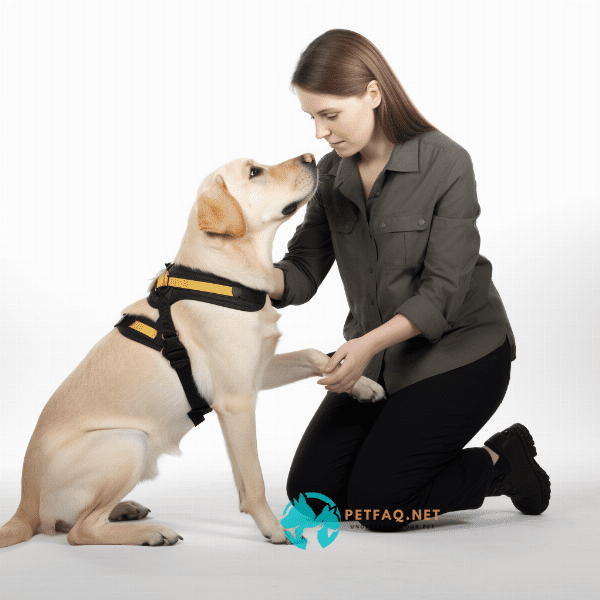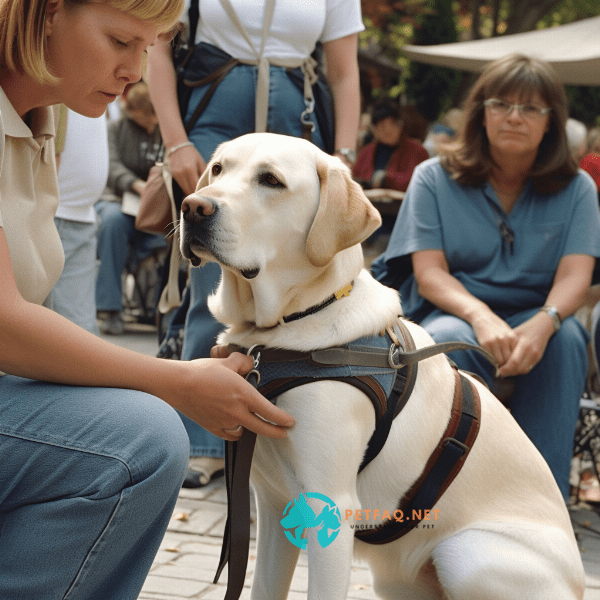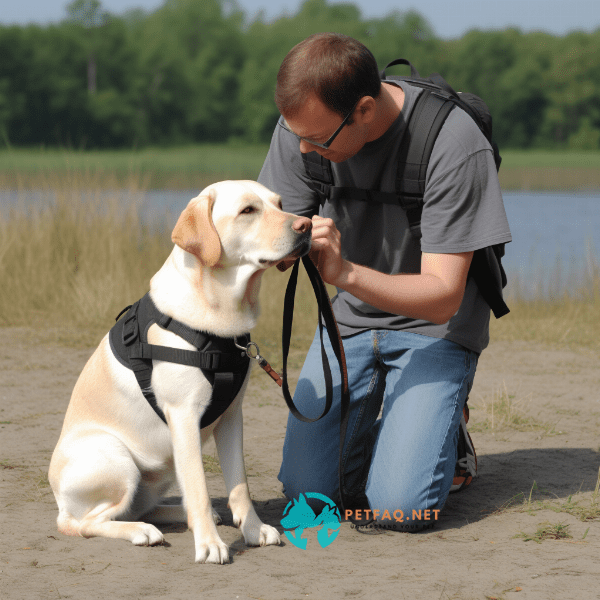Table of Contents
- Understanding the Role of Emotional Support Dogs
- Qualifying for an Emotional Support Dog
- Choosing the Right Dog for Emotional Support Training
- Creating a Safe and Supportive Environment for Your Dog
- Essential Training Techniques for Emotional Support Dogs
- Advanced Training Strategies for Emotional Support Dogs
- Overcoming Common Challenges in Emotional Support Dog Training
- Maintaining the Well-Being of Your Emotional Support Dog
- Legal Rights and Responsibilities of Emotional Support Dog Owners
- The Life-Changing Benefits of Emotional Support Dogs.
Understanding the Role of Emotional Support Dogs
Emotional support dogs play a vital role in providing companionship, comfort, and support to individuals who are experiencing emotional or mental health challenges. These dogs are not the same as service dogs, which are trained to perform specific tasks for people with disabilities. Instead, emotional support dogs provide therapeutic benefits simply by being present with their owners.
The presence of an emotional support dog can help reduce symptoms of anxiety, depression, PTSD, and other mental health conditions. These dogs can also help lower blood pressure and improve heart health. They provide a calming influence and can help their owners feel more grounded and secure in stressful situations.
To be classified as an emotional support dog, the animal must be prescribed by a licensed mental health professional. The dog must be well-behaved, house-trained, and able to behave appropriately in public settings. Emotional support dogs are not allowed in all public spaces like service dogs, but they do have some legal protections under the Fair Housing Act and the Air Carrier Access Act.
Understanding the unique role of emotional support dogs is an important first step in providing effective training and support for these amazing animals. By providing them with the right training, care, and support, you can help them fulfill their important role in the lives of their owners.

Qualifying for an Emotional Support Dog
Qualifying for an emotional support dog involves a prescribed evaluation from a licensed mental health professional. These evaluations are done to assess the individual’s mental health needs and determine if having an emotional support dog would be beneficial to their treatment plan.
In order to qualify for an emotional support dog, the individual must have a diagnosed mental health condition such as anxiety, depression, PTSD, or a similar condition. The mental health professional will then assess the individual’s ability to care for a dog and determine if they can provide a stable home environment for the animal.
If the mental health professional determines that an emotional support dog would be beneficial to the individual’s treatment plan, they will provide a letter of prescription. This letter must be presented to the housing provider or airline when requesting to have the emotional support dog in a public or private setting.
It is important to note that emotional support dogs do not have the same legal protections as service dogs. They are not allowed in all public spaces and may be subject to restrictions. Additionally, the individual must be able to provide appropriate care and training for the dog, as well as ensure that the animal is well-behaved and not disruptive to others.
Overall, qualifying for an emotional support dog involves a thorough evaluation and prescription from a licensed mental health professional. By meeting the necessary requirements, individuals can enjoy the many benefits that emotional support dogs can provide.

Choosing the Right Dog for Emotional Support Training
Choosing the right dog for emotional support training is an important decision that should not be taken lightly. Not all dogs are well-suited for this role, and it is important to choose a dog that is well-behaved, friendly, and able to provide comfort and support to their owner.
When selecting a dog for emotional support training, it is important to consider the breed, size, and temperament of the dog. Certain breeds are known for their calm and friendly demeanor, making them excellent candidates for emotional support training. Additionally, the dog should be a good match for the individual’s lifestyle, living arrangements, and personality.
It is also important to consider the dog’s age and health when selecting a dog for emotional support training. Ideally, the dog should be young enough to undergo training and socialization, but old enough to have developed a stable temperament. Additionally, the dog should be in good health and free from any significant medical issues.
When choosing a dog for emotional support training, it is important to work with a reputable breeder or adoption agency that can provide guidance and support throughout the process. With careful consideration and planning, individuals can find a loyal and loving companion that will provide the emotional support they need to thrive.

Creating a Safe and Supportive Environment for Your Dog
Creating a safe and supportive environment for your emotional support dog is essential for their well-being and success as a therapy animal. This involves providing them with a comfortable and secure living space, regular exercise and playtime, and proper nutrition and healthcare.
When creating a safe and supportive environment for your emotional support dog, it is important to ensure that their living space is clean and free from any potential hazards. This includes providing a comfortable bed, fresh water, and toys for mental stimulation.
Additionally, emotional support dogs require regular exercise and playtime to maintain their physical and mental health. This can include daily walks, trips to the park, or playtime with other dogs. It is important to provide your dog with plenty of opportunities to socialize and interact with others in a positive and supportive environment.
Proper nutrition and healthcare are also essential for maintaining the health and well-being of your emotional support dog. This includes regular check-ups with a veterinarian, a healthy and balanced diet, and any necessary medications or treatments as recommended by your veterinarian.
Overall, creating a safe and supportive environment for your emotional support dog is a critical aspect of their care and training. By providing them with the necessary love, attention, and resources, you can help your dog thrive as a loyal and supportive companion.

Essential Training Techniques for Emotional Support Dogs
Training an emotional support dog is a crucial step in ensuring that they can provide the necessary support and comfort to their owner. There are several essential training techniques that can help prepare a dog for their role as an emotional support animal.
One important training technique is socialization. Emotional support dogs should be comfortable and well-behaved in a variety of social situations, such as meeting new people or being around other dogs. Socialization should be done in a positive and supportive environment to help build the dog’s confidence and ease any anxiety they may have.
Another key training technique is teaching basic obedience commands such as sit, stay, come, and heel. These commands help establish clear communication between the dog and their owner and provide a foundation for more advanced training.
Emotional support dogs should also be trained to handle unexpected situations, such as loud noises or sudden movements, in a calm and controlled manner. This can be accomplished through desensitization and exposure to a variety of situations in a controlled and positive environment.
It is important to note that emotional support dogs do not require the same level of training as service dogs. However, they should be well-behaved and not pose a risk to others in public settings.
Overall, essential training techniques for emotional support dogs include socialization, basic obedience commands, and training for unexpected situations. By providing proper training and support, emotional support dogs can fulfill their role as a loyal and supportive companion to their owner.

Advanced Training Strategies for Emotional Support Dogs
While emotional support dogs do not require the same level of training as service dogs, advanced training techniques can further enhance their ability to provide comfort and support to their owner. Here are some advanced training strategies for emotional support dogs:
1. Task training: This involves training your emotional support dog to perform specific tasks to assist their owner, such as retrieving medication or alerting their owner to an oncoming panic attack.
2. Deep pressure therapy: This involves teaching the dog to apply deep pressure to their owner’s body as a means of calming and soothing them during moments of anxiety or stress.
3. Scent training: This involves training the dog to recognize and respond to specific scents that are associated with their owner’s anxiety or panic attacks. The dog can then provide comfort and support by alerting their owner to the onset of such an episode.
4. Crowd training: This involves exposing the dog to crowded environments and teaching them to remain calm and focused amidst distractions and noise.
5. Retrieval training: This involves teaching the dog to retrieve specific items on command, such as a water bottle or a phone, to assist their owner in moments of need.

Overcoming Common Challenges in Emotional Support Dog Training
Training an emotional support dog can present some common challenges that owners may face. Overcoming these challenges is essential in ensuring that the dog is able to provide the necessary comfort and support to their owner. Here are some common challenges in emotional support Dog Training and how to overcome them:
1. Distraction: Dogs can easily become distracted by their surroundings, especially in public settings. To overcome this challenge, owners should gradually expose their dog to new environments, starting with quiet and controlled settings and gradually increasing the level of distraction.
2. Separation anxiety: Emotional support dogs may develop separation anxiety when separated from their owner. To overcome this challenge, owners should gradually teach the dog to be comfortable with periods of separation through crate training and gradually increasing the length of time the dog is left alone.
3. Fearfulness: Emotional support dogs can become fearful or anxious in certain situations. To overcome this challenge, owners should use positive reinforcement training techniques to help the dog feel more confident and comfortable in a variety of situations.
4. Aggression: Emotional support dogs should be well-behaved and not pose a risk to others in public settings. To overcome aggressive behavior, owners should seek the help of a professional dog trainer to identify the root cause of the aggression and implement a training plan to address it.
By addressing these common challenges in Emotional Support Dog Training, owners can help their dogs become well-behaved and effective support animals. It is important to work with a professional dog trainer who has experience in emotional support training to ensure that the training is effective, safe, and humane.

Maintaining the Well-Being of Your Emotional Support Dog
Maintaining the well-being of your emotional support dog is essential in ensuring that they are able to provide the necessary comfort and support to their owner. Here are some tips to help maintain the well-being of your emotional support dog:
1. Regular veterinary check-ups: Regular check-ups with a veterinarian can help ensure that your dog is healthy and free from any medical conditions that could affect their well-being.
2. Proper nutrition: Feeding your dog a well-balanced diet that meets their nutritional needs is important for their overall health and well-being. Consult with a veterinarian to determine the best diet for your dog.
3. Regular exercise: Regular exercise is essential for your dog’s physical and mental health. Make sure your dog gets daily exercise to keep them in good physical and mental shape.
4. Mental stimulation: Providing your dog with mental stimulation, such as toys and games, can help keep their mind engaged and prevent boredom.
5. Emotional support: Emotional support dogs also need emotional support from their owners. Spend quality time with your dog, provide positive reinforcement, and show them affection to build a strong bond and maintain their emotional well-being.
By prioritizing the well-being of your emotional support dog, you can ensure that they are healthy and happy, and able to provide the necessary support and comfort to their owner. Remember to always consult with a veterinarian and a professional dog trainer to ensure that your dog’s needs are met in a safe, effective, and humane way.

Legal Rights and Responsibilities of Emotional Support Dog Owners
Emotional support dogs play an important role in providing comfort and support to their owners, especially those with mental health conditions. However, it is important to understand the legal rights and responsibilities that come with owning an emotional support dog. Here are some key points to keep in mind:
1. Legal rights: Under the Fair Housing Act and the Air Carrier Access Act, emotional support dogs are allowed to live with their owners in housing and travel with them on airplanes, even if the property or airline has a no-pet policy. This is because emotional support dogs are considered to be part of the owner’s treatment plan for their mental health condition.
2. Training requirements: Emotional support dogs are not required to undergo formal training, unlike service dogs. However, emotional support dogs must be well-behaved in public and not pose a risk to others. It is the owner’s responsibility to ensure that their emotional support dog is well-trained and well-behaved in public.
3. Proper documentation: Owners of emotional support dogs should have proper documentation, such as a letter from a mental health professional stating that the dog is part of the owner’s treatment plan for their mental health condition. This documentation may be required by housing providers or airlines.
4. Liability: Emotional support dog owners are liable for any damages or injuries caused by their dog. It is important for owners to follow leash laws and ensure that their dog is well-behaved in public to prevent any incidents.
Understanding the legal rights and responsibilities of emotional support dog owners is important in ensuring that the owner and the dog are able to receive the necessary support and accommodations while also being responsible and respectful of others.

The Life-Changing Benefits of Emotional Support Dogs.
Emotional support dogs can provide life-changing benefits for their owners, especially those with mental health conditions. Here are some of the ways in which emotional support dogs can improve the well-being of their owners:
1. Emotional support: Emotional support dogs are trained to provide comfort, support, and companionship to their owners. This can help reduce feelings of anxiety, depression, and loneliness, and promote a sense of calm and security.
2. Physical health: Emotional support dogs can also have a positive impact on the physical health of their owners. They can encourage regular exercise, provide motivation for getting outside and engaging with the world, and help reduce stress levels.
3. Social support: Emotional support dogs can also serve as a social buffer for their owners. They can help ease social interactions and reduce feelings of social anxiety or isolation.
4. Increased independence: For some owners, emotional support dogs can provide a sense of independence and autonomy. They can help owners feel more confident and capable of managing their mental health condition and navigating the world.
5. Improved quality of life: Ultimately, emotional support dogs can greatly improve the overall quality of life for their owners. They can provide a sense of purpose, joy, and meaning, and help owners feel more connected to the world around them.
The benefits of emotional support dogs are numerous and can have a profound impact on the well-being of their owners. By providing comfort, support, and companionship, emotional support dogs can improve the lives of those struggling with mental health conditions.

Frequently Asked Questions (FAQs) about Emotional support dog training:
1. How can an emotional support dog help someone with mental health issues?2. What is the process for training an emotional support dog?
3. What are the most common challenges faced during emotional support dog training?
4. What is emotional support dog training?
5. What are some common challenges in emotional support dog training?



